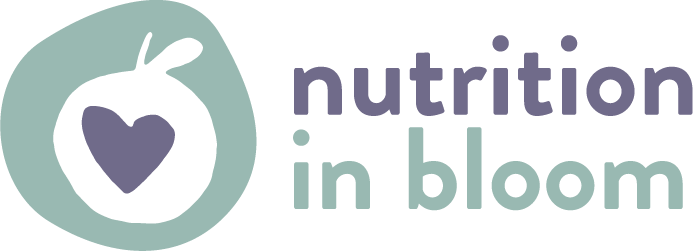Two Things More Important than Portion Sizes when Offering Solids to Infants
Join me in my three-part blog series to learn more about introducing solids to your little one. This post originally appeared on the San Diego Breastfeeding Center's blog and can be found here. To learn more about taking one of my upcoming classes on introducing solids to your little one click here.
Introduction to Solids, Serving Sizes, Feeding Relationship
When babies are 4-6 months of age, many moms start thinking about how much solid food kids should eat. It’s easy to get caught up in a race toward the “starting solids” milestone, but what comes next? Many parents wonder, now that their little one has started eating solid foods, how much is enough? Am I making him/her overeat? Am I wasting food? Am I teaching poor habits?
What might reassure you is that as long as your selections contain a balance of protein, carbohydrate, fats and vitamins and minerals, measuring “servings” of food consumed may not necessarily be the best way to ensure your baby’s success at adopting a solid diet.
How much should your little one be eating?
First, take a step back. Renowned feeding expert Ellyn Satter, MS, RDN, MSSW gives parents the helpful suggestion of a “division of responsibility.” Parents are responsible for the “what, when, and where of feeding; children are responsible for the how much and whether of eating” (Satter). Babies have the innate ability to self regulate. They will let you know when they want more, such as opening their mouths when food is offered. Conversely, will let you know when they are full, such as turning away from the spoon and sealing their lips tightly.
Rather than a fixed “serving” - offer food to your child, but look for signs that they are full. With that in mind, you have two things in your control: when is mealtime, and what are you serving.
When is mealtime?
A general idea of how many meals you should offer each day depends on the age of your child:
Once you have an idea of when those mealtimes and snack times fit into your baby’s wake and sleep schedule, you’ll want to establish some strategies for how much to offer at each serving. Start small: when first introducing solids, 1-2 teaspoons is enough for your little one. And remember, up to one year of age breast milk or formula will continue to make up the majority of your baby’s calorie intake.
Next, think about the overall composition of the meal:
Thinking about the composition of meals, know that all babies are different and some may progress through textures more quickly (or more slowly) than others. That’s okay. As discussed above, you can only control the what and when. Your child is in control of the how much and whether.
This process is bigger than serving size. You’re trying not merely to nourish your little one; but to introduce your little one to a variety of new foods, textures, flavors, and nutrients. This diversity is part of a journey you’re on, together with your young child, to ensure their healthy relationship with food. These approaches will help your child to develop the tools to succeed when making food decisions on his/her own.
Stay tuned for my next post: “How To Help Your Little One Feel Full” to learn more about introducing new foods to your child.





